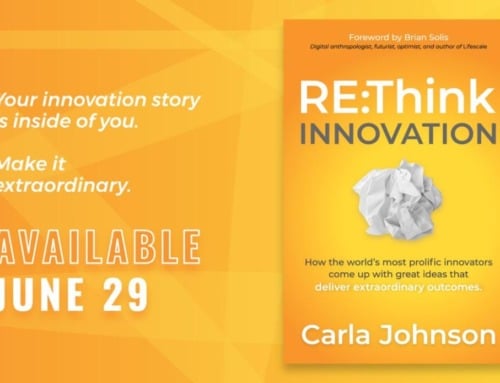Most agencies believe they don’t have an agency new business program. They say that they their business development strategy just relies on referrals and growing their current clients. And it’s working great.
But they’re wrong. They do have one. Here’s how it works.
Big client either fires them or notifies them that the account is going up for review. Agency owner wets himself and goes into either a full-blown panic attack or into a catatonic stupor. There’s usually a drink or three consumed.
The next day the owner pulls together the leadership team and there’s a flurry of activity to drum up some money. The owner sits in her dark office, putting together “the list” of who will be laid off if the revenue can’t be replaced.
The creatives come up with a direct mail campaign and the account service team is tasked with creating or updating the cobweb covered prospect list of about 300 companies.
The agency does the new business mad scramble until they either have to lay off some people or score a new account. All of a sudden, they get so busy servicing the clients they have that they don’t have time to keep up whatever new business activity they’d been pursuing.
And so the cycle begins again.
Want to finally break the chain reaction? Want a business development strategy that you can actually deploy and implement no matter how busy your agency is?
You need to create a macro – micro – nano agency new business program.
Macro: The macro portion of your agency new business program is aimed at people who have never heard of you or your agency before. There are multiple research studies done with decision makers that hire agencies that clearly state the two primary ways they look for agencies are:
- Asking their peers/friends
- Internet search
In other words – if they’ve never heard of you before, odds are, they are going to find you.
Where does that happen? Well, let’s assume you already wow your existing clients and are a pretty good networker so that covers the referral portion of the equation. That leaves us with the Internet. How findable are you? How useful is your website once someone gets there? What does it tell a prospect about you? How is it different from your 3 biggest competitors’ websites?
Your website is vital but it’s not enough to be an effective business development strategy.
What kind of helpful content are you creating that will get shared and bring you more traffic? How are you using LinkedIn to connect with people who should know about you and – what are you doing once you get connected?
You need to be regularly creating content that demonstrates how smart, helpful and generous you are. You (meaning your team, not just you) need to create outposts like FB, LinkedIn and Twitter that you leverage to share that content.
And you need to wrap it all up in your agency’s unique brand/personality so that they get a sense of who you are/how you work long before their first email, call or visit.
Most agencies don’t use digital ads or any of the very sophisticated digital tools for one reason. They have nothing of value to offer in exchange for the click/eyeball.
That’s sad.
This is also where a concentrated PR effort should come in as well. Create content and get published in trade pubs, speak at conferences, write a book, etc. Get noticed for being smart/sharing your smarts.
This is your pull audience. You want your content, PR mentions and word of mouth references to pull perfect strangers to you.
Micro: These business development tactics are for the people who sort of know who you are. They might be past clients who have walked away, people you pitched and lost in the past, your networking group, anyone who has ever signed up for anything on your website, etc.
This is your drip audience. You want to keep pushing connect and opportunities to connect with you at them until they ask you to stop or hire you.
Have a quarterly newsletter that goes out three times a year? Shame on you. But you aren’t any different from most agencies.
Is your newsletter all about you? Your awards, your work, your blah, blah blah? Stop it. Now. The only context in which they care about you is in the “how can you make be smarter/do my job better?” Otherwise, they don’t really care.
Sure…people tell you it’s fun to see your crew’s Halloween pictures and it is. But only if you tell them 25 useful things first and then toss in one silly share about yourselves.
In all reality, your enewsletter should be at least once a month, if you’re giving them good content from your blog and other writings. Keep it very short (2-4 stories at the most) and keep it laser focused on the audience.
This is the group of people who should also be invited to your annual agency social event or anything else you have cooking that will give you an opportunity to mingle among them.
Do not prune this list. Ever. Unless someone asks to be taken off – the subscription to your enewsletter is a lifetime! You never know when someone is going to be ready to change agencies, change jobs and need a new agency or want to refer you to someone but can’t remember your contact info.
Think of this as your dollar cost averaging group of your business development strategy. You invest a little in them every month because you have no idea when the market is going to spike. Just stay under their nose enough that don’t forget about you and each time they hear from you, it’s useful to them.
Nano: I know by now you’re breathing into a paper bag, thinking this is a lot of work but honestly, once you create the habit, it really is not. You just have to build up that muscle. But the nano section is where you get the good news.
Most agencies that actually have an agency new business program got way too ambitious. You don’t need to cast a net and bring in an entire school of fish. Truth is – you couldn’t handle it if that many clients wanted to come on board. For your agency’s business development strategy to be incredibly successful, you only need a handful of wins every year.
The nano section of your agency new business program is where we get very focused on the 25 (and not one more) clients you would love to have on your roster. They still need to make sense – sure, I’d like Disney and the Dodgers on my roster but I do need to stay in the realm of the real world. These are the prospects you are willing to chase until they tell you to go away or hire you.
Ideally, these organizations will mostly fall into your sweet spots (the vertical niches where you have a lot of experience, success and expertise) but you might toss in a wild card or two. But remember – you have to be relevant to them too. So don’t wander too far.
You’re going to go old school on this one. You’re going to mix the power of lumpy direct mail, your thought leadership and your absolute persistence in getting this done.
Create a calendar that has you touching each prospect every 8-12 weeks. Mix it up. Sometimes – send them a lumpy package that you know will get by their gatekeeper. Make it a book (ideal if you wrote one recently) that you think they’d get something out of, or a tool they can use in some way. Be creative — it could be a jump drive with a podcast on it, something industry related, etc. Just be memorable.
At least twice a year – you need to send (snail mail, not email) them a thought leadership piece that you/someone on your team wrote. Wow them with your smarts and that they get what you’re talking about. If you can include a relevant case study with it – all the better.
At least once or twice a year – pick up the phone and call. But do not call to see if they got your mailings. Call with something interesting to tell them or to introduce them to someone of value, or invite them to something special that would enhance their job performance in some way (A speaker, event etc.). Odds are you’ll get their voicemail. But you don’t want them to think you’re afraid to actually reach out and connect.
That’s it – macro, micro and nano. If you’ll invest a little bit of time in your business development strategy, sweat equity and brain power to this every day and every week – pretty soon, it will be a habit that runs through your shop and you’ll be one of the rare ones that actually has an agency new business program that chugs along, no matter what.






